Key in a search term below to search our website.
Key in a search term below to search our website.
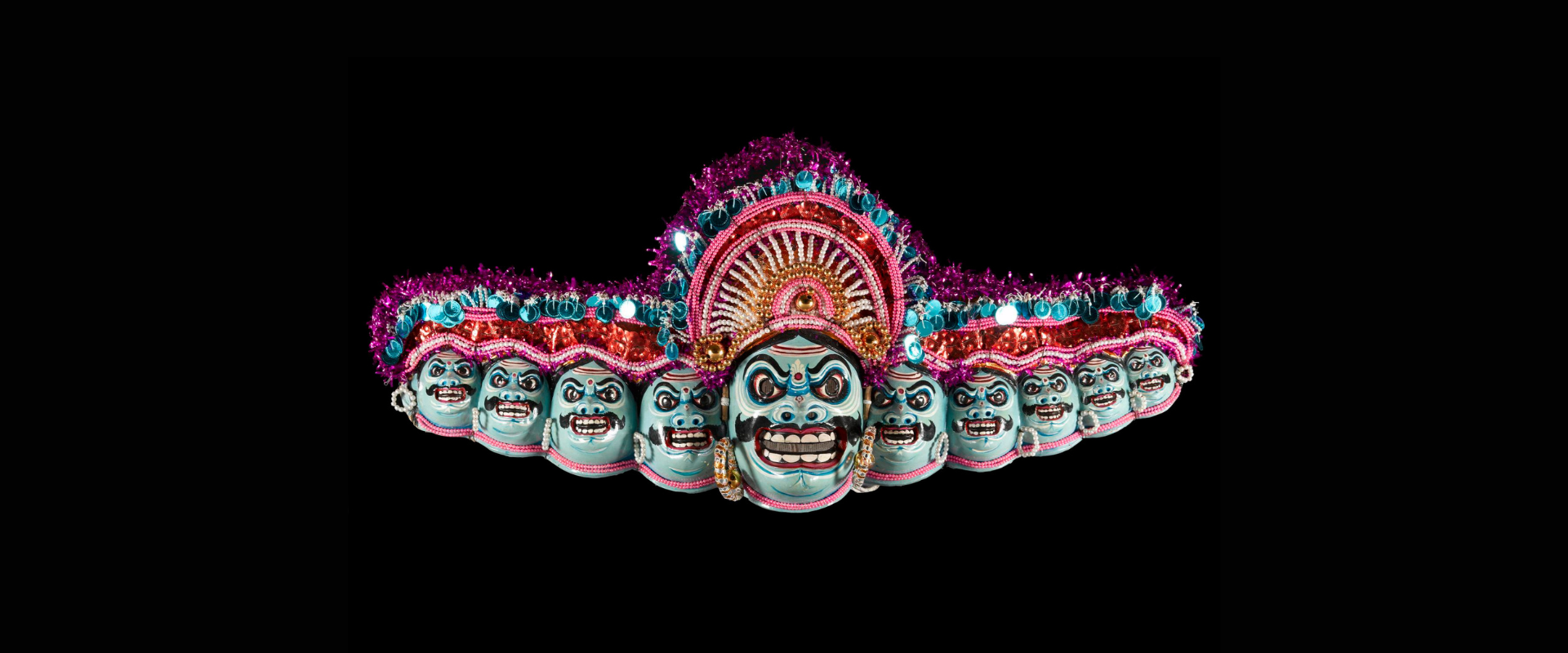
कहानियाँ Kahaniyan of South Asia
The mask of Ravana can be found in the Performance and Lives gallery on Level 3 at the National Museum of Scotland.
This stunning mask showing the ten-headed demon king Ravana is connected to the festivals of Navratri and Dusshera, a celebration over nine days during the months of October and November. The festivals celebrate the victory of the exiled Lord Rama over the learned but evil Demon King Ravana and his army, who had kidnapped his wife, Sita. The ten heads symbolise Ravana's knowledge and intellectual prowess equal to ten human beings rather than him physically having ten heads. This was his blessing from Lord Shiva.
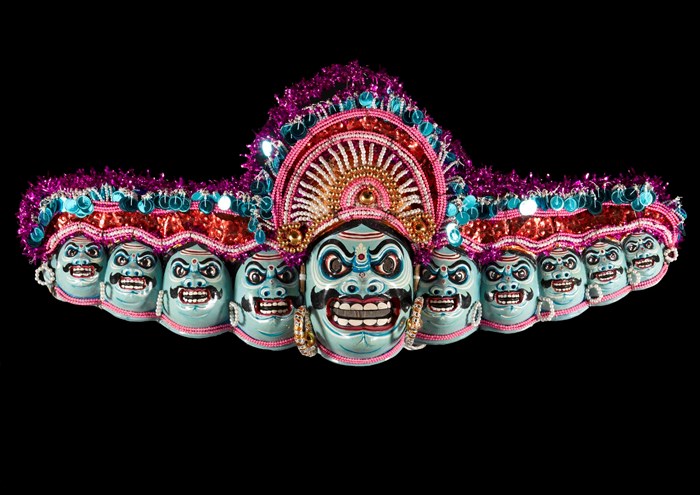
Ten headed papier-mache mask of the demon king Ravana, part of a Chhou dance costume, painted in blues, red, white and black and decorated with beads, sequins and tinsel: India, Bengal, Purulia District, by Nepal Chandra Sutradhar, 2001 (K.2001.944 A).
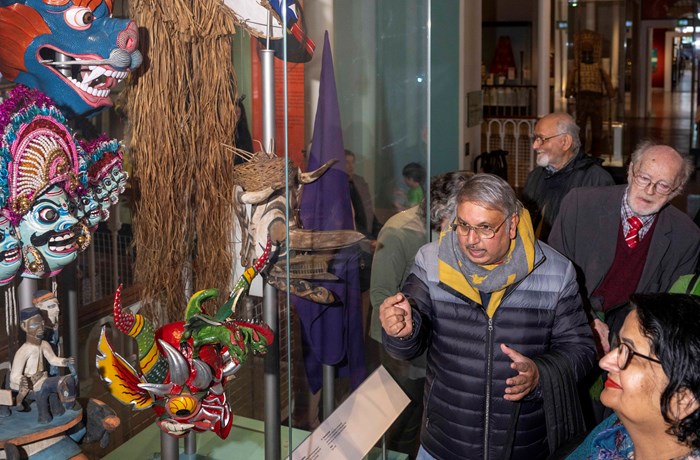
NKS discuss the celebrations and symbolism connected to the mask of Ravana in the Performance and Lives gallery. @NeilHannaPhotography
After Navratri and Dusshera comes the festival of lights, Diwali, commemorating Rama and Sita’s safe passage home guided by lights brought by people from their village.
The children in the group were getting excited talking about the coming Diwali celebrations during our visit and the delicious food they were going to eat. One child commented, “In the end the bad guy is killed (Ravana) and people from the village light up the path with oil lamps to help Rama and Sita safely get back home.”
The importance of Ravana’s mask is prevalent in modern times and can be seen in popular culture. In schools across India children make paper masks of Ravana in art classes and use these in school performances.
We followed this practice during our visit to the museum when the children made their own Ravana masks.
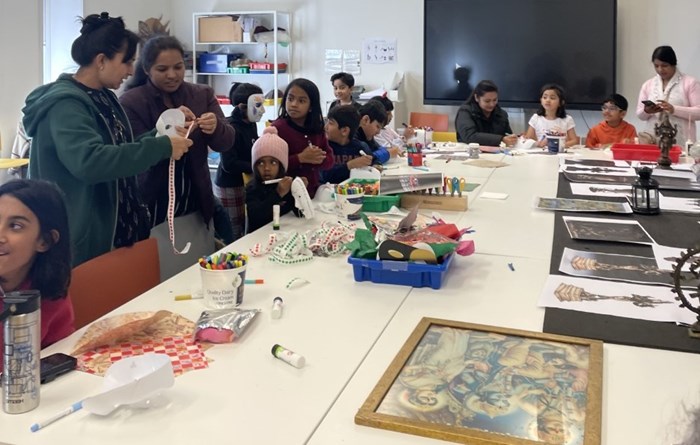
Families making masks inspired by Ravana during Dusshera and Diwali celebrations.
During the Dusshera celebrations, Ravana’s mask is worn by people during the pageant of Ram Lila, an annual event popular particularly in northern India.
The mask of Ravana brought back fond memories of these Ram Lila performances which many of us had seen as children in India. Traditions of Ram Lila are found throughout India in any Indian language. It is performed in the evening as a play, dance drama, or solely as a dance event. After the enactment of the famous war between good and evil, the Ram Lila celebrations culminate in the festival of Dusshera, when Ravana’s effigy is burnt.
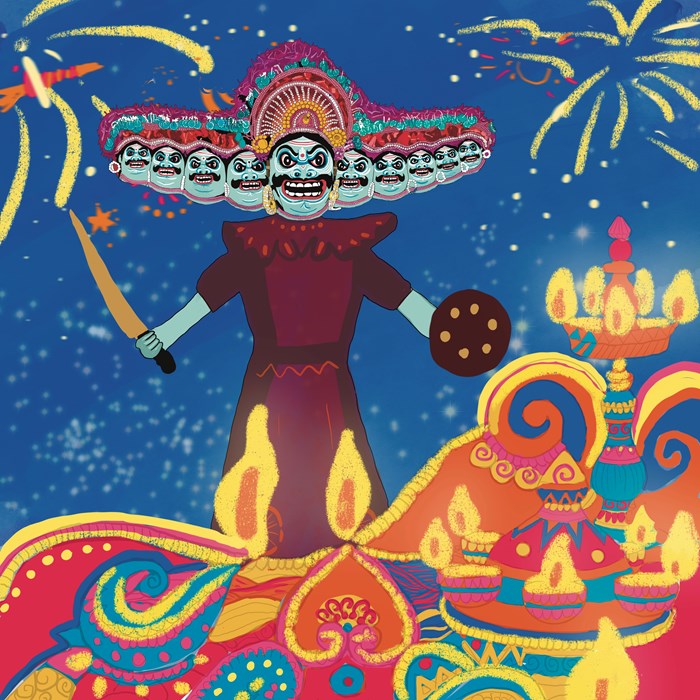
Ravana during Diwali celebrations. Illustration: © www.malinichakrabarty.com